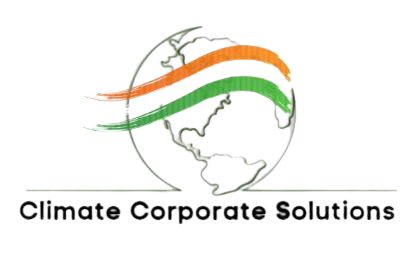“Every single C.E.O. and board is having to figure out what their carbon footprint is and what they are going to do about it”
Paul Tudor Jones II, the investor and founder of Just Capital, Jan 2020

Imagine a scenario where rationing on water has become mandatory in California, delay in rains leads to widespread hunger in Africa, China becoming the dominant user of the energy consumption………..
SCARY……. Isn’t it????
Concerns about climate change has been rising since a decade now, and the situation is worsening with each passing month/ year. Rising temperatures have led to the tensions amongst the business leaders across the globe that are stemming from trade, geo-political and domestic conflicts.
The Inter-governmental Panel on Climate Change (IPCC) suggests that the likely costs of just 2°C of global warming would be of the order of 0.5-2.0% of global GDP by the middle of the century; even if strong adaption measures (to reach environmental sustainability) are taken. In the United States, reports from the Risky Business Project (that uses a standard risk-assessment approach to determine the range of potential consequences to each region of the US-as well as for selected sectors of the economy-if the Americans continue with their existing path of climate conservation. To add further: the research focused on the clearest and most economically significant of these risks namely damage to coastal property and infrastructure from the rising sea-levels and increased storm surge, climate driven changes in agricultural production and energy demand, and the impact of higher temperature on labor productivity and public health) show that the economic impacts of Climate Change will likely grow. For example: within the next 15 years, the higher sea levels combined with storm surge will likely increase the average annual cost of coastal storms along the Eastern Seaboard and the Gulf of Mexico by $2 billion to $3.5 billion.
Saving the planet takes a lot of money and money is both the theme and the sub-text of initiating action in the climate process. The United Nations process that initially started with coming to the climate change conferences and observe and advice about the adversities of the rising climate (due to increased use of fossil fuels) is now all about the “show-and-tell” virtue. There has been a dramatic shift in the manner the UN conducts its climate conferences now. “Momentum is there”- declared Paul Polman, the former Unilever CEO (after having attended the UN conferences in previous years). According to him: “Climate change is the biggest opportunity of all times and we are close to several policy tipping points”.
According to the experts, there is mounting pressure for change to mitigate and adapt to the direct impacts of climate risk and its connected downstream risks. Businesses are also facing huge risks internally as well…..from its employees being unhappy about the management’s climate change initiatives and not being able to project the organization as the environmental friendly one.
In addition to the above, the industry insiders (on the condition of being anonyms) do confirm about the sky high pressure that the corporations are witnessing from its investors. The industry stalwarts do acknowledge that the leaders today are facing great heat from all of its stakeholders to engage in low-carbon transition or net-zero emissions plans to sustain in competition in the long run. In addition to this, financial regulators are also demanding for transparency against climate scenario like making the climate risk disclosure legislation and litigation against the companies mandatory. The companies that fail to disclose the climate risk should face serious consequences from both the government and the stakeholders. Example: Bank of England that stresses upon testing banks and insurers on the above mentioned parameters.
As the former CEO of Unilever Paul Polman mentioned that we are close to several tipping points… the companies need to be more strategically resilient and should be able to convert risks to significant opportunities in order to align themselves in the direction of change. To be able to do so, the companies can adopt some of below mentioned approaches:
a. Take a TRIM TAB Approach to climate change
According to Amy Edmondson: “business leaders are often depicted as greedy and short-sighted, who refuse to face crucial issue like climate change and subsequently find it difficult to change the perception.”
The term “bully-point” was coined by Theodore Roosevelt where “bully” meant “terrific.” The term was coined to explain the power and potential of speaking out and influencing public opinion. In today’s time, the same is used to describe any position with the potential to get public’s attention.
With the above explained concept Amy Edmondson wanted to explain that the business leaders today have bully point that is unparalled in history, provided they are ready to take the advantage of the opportunity.
Having access to various social media platforms and various forms of communication, it is very easy for the leaders to voice their opinion about climate change and also, to explain what all steps they are undertaking to minimize its impact.
This exemplify a simply fact that the leaders in today’s time do acknowledge the threat to the society in the decades to come, created by their operations; but with the selfish motive to earn quarterly profits, they refuse or in other words, choose to ignore the same. In fact, behind the close doors many thoughtful leaders throw up their arms thinking “my company is just a drop in the bucket” OR “until regulations happen” OR “there is nothing that my company can do or make a difference”.
This is where TRIM and TAB comes in!!!!
To maintain the business of climate change and to be economically and strategically sustainable, business leaders must recognize this principle and just get started. In other words, to be a flag-bearer in bringing about change and accepting climate change as an important stake holder, it is imperative that the leader take small steps and inching closer to sustainability with each step. In short,
Just “Trim & Tab”
b. Tackling Climate Change will cost less than We Think
Yes, it’s true!!!!
Prof. Rebecca Henderson argues that an inaction on the climate change will prove to be a costly affair than the timely action. According to United Nations estimates: roughly 1% of the world’s GDP a year or about $840 billion would be needed to curb the impact of climate change.
The above seems to be small number in comparison to the various studies that has been undertaken over the years. According to a study published in the Proceedings of the National Academy of Sciences: damages from uncontrolled Climate Change (an increase of 3.4 degree Celsius) could cost $12 trillion (2.8% global output) by 2095. Moreover, the same study suggests that delaying action could increase mitigation cost by 40% every decade, making it impossible to climate change impacts.
Building an energy efficient, decarbonized economy is a massive shift and will require the transformation of almost every company’s business model. Making changes in the business model is a major shift and involves a lot of planning and persistence on behalf of the leaders. However, having said so, it is still an achievable task. How??? Let’s discuss with an example:
There have been many investments in the field of energy conservation and many
of such investments have already been NPV (Net Profit Value) positive. A very
recent report (pdf) estimated that an investment of $3.2 trillion worldwide in
energy conservation would avoid new supply investments of $3 trillion and would
pay for itself within 3-5 years, while a recent Department of Defense sponsored
study (pdf) concluded that using LEED-silver or equivalent standards in the design
and construction of new buildings increased construction by less than 1% while
reducing energy costs by between 5-30% over the life of the building. Between
1990-2012 IBM reduced electricity consumption by 6.1 billion KWh, saving $477
Million through energy conservation alone.
There can be plenty of such examples on energy conservation. The idea behind citing these examples is that business on one hand is greatly impacted by climate change but on the other hand, non-action on the part of business leaders will impact the business to a larger extent and that too negatively. Ultimately, every leader aims to sustain in the competitive scenario in the long run. Whether it sustains after investing small amount today or by investing huge chunks tomorrow……..
IS DECISION THAT NEEDS TO BE MADE?
c. Need a miracle: Nuclear Energy can be the Answer
According to Joe Lassiter: nuclear power is the answer to the dangerous carbon emissions.
Various world’s governments- the United States, the European Union, Japan, China, India and the rest confirms that they fully expect their citizens to continue burning fossil fuels and releasing CO2 emissions at the above rates that by 2100. This will outstrip the cumulative amount of atmospheric CO2 needed to increase the average world temperature by 2°C if not by 6°C; and after 2100, world will have to live with the elevated temperatures and acidified oceans for 100 years or more.
Apart from China, all the other nations pledge to keep their emissions flat. But, the urge for economic growth makes the usage of fossil fuels and fuel emissions by the Chinese firms at an alarmingly high rate. This is devastating for the world at large and it need to be curbed. To curb this there is a form of energy that needs to be adopted and promoted by all the leaders. This is “nuclear power energy” and this needs to be replaced with the traditional use of energy.
This nuclear power is not the traditional one but is the one that is much safer even with today’s reactors. This energy form can run on today’s uranium as radioactive waste fuels like thorium (a waste product of rare earth mining) and depleted uranium (the waste product left is spent nuclear fuel rods).
The above is a great option but for any business leader to adopt them there are large barriers: such as outdated nuclear regulations that scare most of the leaders. According to Prof. Lassiter, it is difficult to adopt nuclear energy as the new means but it is imperative that the leaders today become nuclear driven entrepreneurs and must act today in order to conserve environment.
d. The ABC’s: Business Perspective
The business of climate change requires active participation on the part of leaders to ensure that the diversity is addressed in a proper manner. It involves that the focus should be on bringing about the change and cut down on the distraction on the part of the leaders. Prof. John Macomber (Senior lecturer of Business Administration) proposes ABC’s for the business leaders to address climate change in a more economic efficient way and to stay more sustainable in the competitive world. These ABC’s are:
· Actuarial thinking: means assessing probabilities and portfolio risks for the companies to look at what might or might not happen while a natural calamity. It’s a way where financial managers cover the possibility of unlikely but high event impacts.
· Basic Resources: society needs to collectively address the basics of water, energy, waste and transit so that we (as a business house) do a lot more with the resources and in a more efficient way so that the needs of the society as a whole are met with. Investments in efficiency and access benefits many sectors and this, in turn, gives enough opportunities to the business leaders to think out of the box and create value for them and sustainable environment within and outside the organization.
· Cities: For any business leader to be sustainable yet be competitively at the top, it becomes imperative that he works in accordance of the laws of the land and work closely with local leaders/ mayors. This is particularly important mainly for two reasons: first being the local leaders are more aware about the availability of resources and hence, the business leader can devise its strategy in accordance of the availability; and second working closely with these local leaders helps the business houses to allocate resources in a balanced manner making the development in sync for both the smaller and larger cities.
Another important aspect is working with local leaders is that these leaders together with the national leaders make the growth inclusive with active participation of the local citizens as well making the issue of climate change look smaller and well achievable. As the former Mayor of NYC Michael Bloomberg said “Nations talk, cities act”.
· Demand Management: it is difficult to manage the adversity of climate change and still have economically profitable and sustainable business. Still, if the leader aims at having modern ways and means in managing demand, the resources will not get wasted and the complexity of climate change will be well under control. Example: Ener NOC in the demand response space, and Johnson Controls, in the energy performance space that creates business value by stretching resources further.
· Finance: Prof. John D Macomber lays the greatest emphasis on finance. According to him, the projects needs to be additive so that funding is collective and the projects become competitive, resource efficient as a whole. It is greatly emphasized that the projects that are being carried out should be done by organizations/ companies/ individuals that are well-versed with their job. This leads to less wastage of available resources and the project is completed faster. Also, making the cash flow tradable makes the leaders have more capital that can be invested in reducing wasted energy, less CO2 and less wasted water.
These ABC’s help the leaders to adopt sustainable practices in improving environmental conditions and stay competitive alongside.
e. An Aggressive CEO
Scientists have reached consensus about the consequences of climate change and at the same time corporations have achieved unprecedented political war. CEO’s in today’s time are like rockstars those enjoy position to educate public and policy makers the climate change is critical for stable long-term economic growth.
However, it is imperative that CEO’s become aggressive in voicing their opinion about climate change in order to become economically viable and environmentally sustainable. An aggressive leader can approach the complexity of climate change with both the public and the decision makers together so as to make its voice heard and, hence, bring about change.

Knowing all this, the obvious question that arises:
“Which CEO will be the flag-bearer for Climate Change & Economic Sustainability”??





















